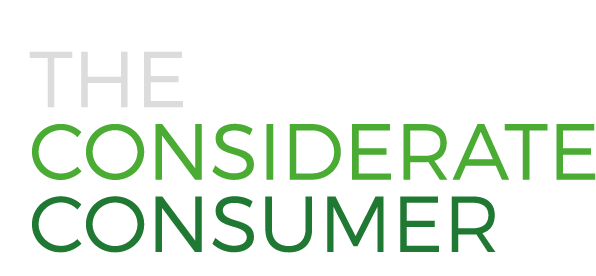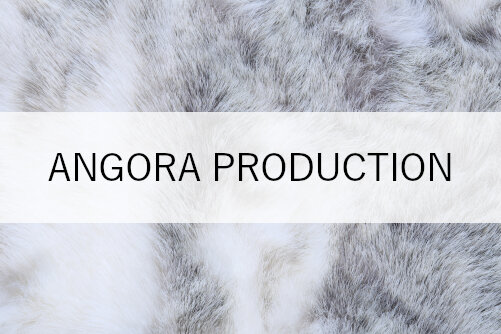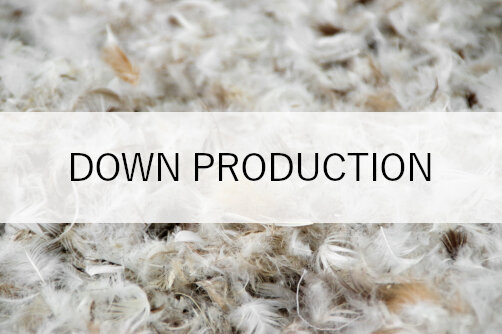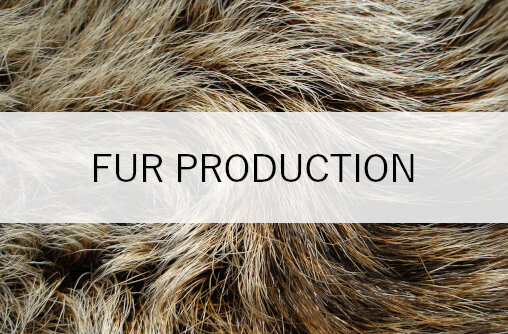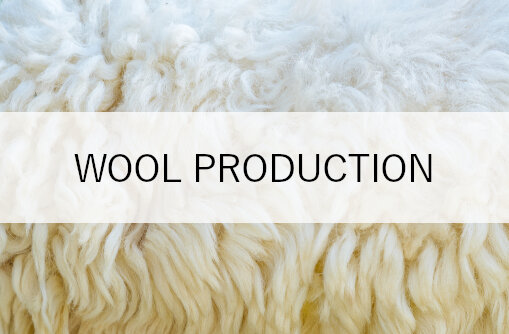January 2020
Fashion is awesome in so many ways, and it is as diverse as its wearers – it’s a wonderful way to express your personality, to simply create art, to play around with aesthetics, or to just emphasise beauty.
Learn about considerate alternatives to animal products in fashion
Click on a topic below to jump directly to the appropriate section.
TABLE OF CONTENTS
ANIMAL-CONSIDERATE FIBRES
Declaration of Animal-Considerate Fashion
Shopping Animal-Considerate Fashion
CONSIDERATE ALTERNATIVES TO ANIMAL PRODUCTS IN FASHION
Angora Alternatives
Down Alternatives
Fur Alternatives
Leather Alternatives
Wool Alternatives
THE CHALLENGE: ANIMAL-FIBRE PRODUCTION
Angora Production
Down Production
Fur Production
Leather Production
Cheap Wool Production
animal-considerate fibres
As a rule of thumb: when shopping, go for animal-considerate fibres.
Usually, you can find natural alternatives and special faux materials that are made to simply imitate the animal products.
Avoid fashion items that contain animal products, such as Angora →, Down →, Fur →, Leather → or Wool →.
Browse The Vegan Society's List of cruelty-free labels and options or Justine’s Blog for animal-considerate fashion brands.
declaration of animal-considerate fashion
Since 2011, it has been mandatory in Europe to identify (on the item’s label) any non-textile part of a product that is of animal origin. The product label is required to display the wording: "Contains non-textile parts of animal origin".
where to shop animal-considerate fashion?
Some organisations and activists provide listings with fashion labels avoiding materials derived from animal origin.
Check for example the animal charity Peta's list of companies that refuse to sell angora: Cruelty-Free Companies or blogger Justine’s List for a first overview.
CONSIDERATE ALTERNATIVES TO ANIMAL PRODUCTS IN FASHION
So, what alternatives are there for animal products? Read further to learn more.
ANGORA ALTERNATIVES
Angora has a fluffy feel to it, it absorbs sweat, and keeps us warm.
Fashion items like hats, socks, scarves, tights, and pullovers can be made of or contain angora.
WHAT IS ANGORA?
Angora hair comes from the coat of downy domestic angora rabbits.
Angora fibre is distinct from mohair, which comes from the angora goat.
ANGORA ALTERNATIVES
The market provides a huge range of alternative materials. Just check the individual item's label.
Tencel, for example, is breathable, long-lasting, and biodegradable.
Lyocell from cellulose is similar to angora is its softness and is also moisture-repellent.
Other alternatives include polyester fleece, synthetic shearling, sisal, hemp wool, bamboo wool, linen wool, flax wool, modal, cotton flannel, viscose, and nonwoven, acrylic, or soy silks.
And check our list of Eco-Friendly Fibres → and Innovative Fibres →
DOWN ALTERNATIVES
Down is considered a primary material for many major brands worldwide, and is a feather that is commonly used in fashion and textiles, especially by brands who specialise in winter or outdoor apparel.
WHAT IS DOWN?
Down is the soft layer of feathers closest to a bird’s skin. It is a small miracle of nature. Lightweight, with high "bulk", it offers outstanding thermal insulation and so "is promoted as a fluffy insulation used in both trendy outdoor wear, such as puffer vests, to luxury homewares like duvets and pillows". (Four Paws)
CERTIFIED DOWN
If you want to buy items with down filling, check them for one of the following certifications:
The Responsible Down Standard (RDS) was launched by the outdoor brand The North Face, and is now widely used in textile industry.
The Global Traceable Down Standard (TDS) was developed by the industry in collaboration with animal welfare organisations
and is based on outdoor company Patagonia's Down Standard.
FEATHER SUBSTITUTES
Instead of down fill, buy down-free alternatives and look for terms like "synthetic down”, “down alternative”,
or “polyester fill”.
HIGH-TECH FABRICS
Check items for fills that use high-tech fabrics, like MicroMax, TCS Down Free, Primaloft or Thinsulate. For instance, German outdoor clothing maker PYUA manufactures its clothing from recycled or recyclable polyester materials and runs its own item-return system. Also, brands like Bleed, Vaude or Patagonia sell jackets and coats with fill made of recycled polyester.
NATURAL FIBRES
Other alternatives are natural down-free fillings, like cotton, hemp, kapok, (wild) silk, or tencel.
Learn more about other Plant Fiber → options.
FUR ALTERNATIVES
Fur or fur trim is magnificent, soft, and warm – blissful to the eyes and skin alike.
WHAT IS FUR?
Fur is the fine, soft, hairy covering or coat of mammals.
FUR DECLARATION
Because it is often hard to distinguish real fur from good quality faux fur, it is mandatory that any non-textile part of animal origin included in a product be identified (on the item’s label). So if a fashion item contains fur, this is required to be declared. Since 2011, European product labels have been required to display the wording: "Contains non-textile parts of animal origin".
ETHICAL FUR: ROADKILL
Check out entrepreneur Pamela Paquin's fur accessories made from the casualties of our roadways. Items from the one-of-a-kind business Petit Mort Fur legitimise the term "ethical fur", as luxurious pelt pieces are fashioned from recycled American roadkill. Paquin works with animal control and the Boston Highway Department to be notified whenever an animal is run down. She skins the animals and leaves everything but the fur in the woods for other animals to eat. (...) Each of the furry fashion items has a silver badge indicating what type of animal was used and on which road it was found.
FAUX FUR
As a rule of thumb: Avoid fur and go instead for faux or fake fur. Faux fur is made to simply imitate real fur.
HOW CAN WE DETECT FAUX FUR?
"The best way to tell is by parting the fur. Real animal fur will have skin at the base where the hair is attached, whereas fake fur will have a fabric mesh. Another clue is the ends of the hair strands, which will be blunt (like they have been cut) if they are fake. Real hair usually tapers to a point". (Claire Bass – HSI UK)
Or, check the Faux Fur Guide at the Human Society International UK (SI UK) website.
FAUX FUR SHOPPING GUIDE
Listed below are some examples of faux fur producers.
There are likely many more companies on the market who are selling fluffy faux fur – just browse the web
Charly Calder faux fur aims to give wearers the feeling of luxurious fur without harm coming to any animals. (International)
Fabulous Furs: “The World's Finest Faux Fur” (International)
Helen Moore: Faux fur hats, faux fur scarves, faux fur throws, faux fur cushions, faux fur hot water bottles, faux fur accessories – everything handmade in the UK. (International)
Shrimps is a faux fur fashion label. (International)
Stella McCartney: Anything you can imagine in the way of fashion, including faux fur coats – cruelty free. (International)
Sweet Herb: Faux-fur capes, boas, stoles, vests, hats, and bridal accessories. (International)
WHERE TO SHOP ANIMAL-FRIENDLY FUR
"The international Fur Free Retailer Program identifies retailers that have committed themselves in writing to withdrawing from the sale of fur. The program is an initiative of the Fur Free Alliance, an international coalition of more than 40 leading animal and environmental protection organizations worldwide, representing millions of supporters around the world". (Four Paws)
LEATHER ALTERNATIVES
Leather is durable, versatile, tough-as-nails, fray-proof, has an inviting texture, a luxurious feel,
and high-quality leather is said to improve with age.
WHAT IS LEATHER MADE OF?
Leather is traditionally made of cowhide, pig hide, or goat, sheep, dog and cat skin; but the skin of exotic animals, such as elephants, zebras, alligators, ostriches or kangaroos, is also used. "The most ‘luxurious’ (i.e. soft and thin) material, however, is supplied by newborn veal calves and sometimes even unborn calves taken prematurely from their mother’s wombs". (Caroline Lennon – One Green Planet)
LEATHER ALTERNATIVES
You do not necessarily have to do without the leather look, however, when choosing a leather-free alternative.
There are many materials that replace leather. Some even in appearance, feel and properties. These materials are marked as follows: fake leather, faux leather, pleather, and synthetic leather, although in the furniture industry, leatherette is the most common name.
To help inspire you, we’ve listed some further examples of a “leather-like look” below:
CORK LEATHER
Cork leather is made from the phellem layer of bark tissue from the cork oak. Cork leather is waterproof, renewable (since the trees grow back within a few years) and completely recyclable. There are many shops that make use of cork for bags, shoes, wallets, and belts.
The blogger Ethical Elephant provides some examples of brands that use cork material.
Just browse the web for “cork products” and you will find a variety of brands listed.
FRUIT LEATHER
"Fruitleather Rotterdam" is currently developing a new, eco-friendly process that converts leftover fruit into durable, leather-like material.
LAB-GROWN LEATHER
Modern Meadow grows leather directly from living skin cells.
Lab-grown leather production - Andras Forgacs, founder at Modern Meadow at Ted Talks
MUSHROOM LEATHER
Companies like Mycoworks grow leather from mycelium, the dense root structure of mushrooms. "It is actually the skin of the mushroom". (Phil Ross – artist and entrepreneur)
PINEAPPLE LEAF FIBRE
Made from pineapple leaf fibre,
Piñatex is a branded natural and sustainable material that can be used as an alternative to existing textiles and leathers.
FURTHER LEATHER ALTERNATIVES
To help inspire you, we’ve listed some further ideas below:
Cactus Leather
Eluxe Magazine, for example, lists a variety of leather alternatives.
Check items made of recycled plastic, like those from Matt & Nat.
Check out items made from recycled plastic, like those from Matt & Nat.
Try bags, wallets, and shoes made of Plant Fibres →, such as cotton or bast.
For further inspiration, check our lists of Eco-Friendly Fibres → and other Innovative Fibres →
WOOL ALTERNATIVES
Woolly clothes keep us warm in winter and provide coolness in summer.
Wool is of natural origin and is a renewable fibre.
WHAT IS WOOL?
Wool is obtained by shearing sheep, goats, or other animals.
SUSTAINABLE WOOL
When buying woollen garments, check them for certificates that prove that the wool contained in them has been obtained through species-appropriate farming methods.
Check the label for one of the following seals and/or visit the website of the specific brand to find further information.
KbT (Controlled Biological Animal Husbandry)
The kbT label stands for "controlled biological animal husbandry" (German: kontrolliert biologische Tierhaltung) and indicates conformance with European Regulations on Organic Farming.
This German certificate validates that the animals are held in species-appropriate husbandry conditions. It assures that sheep are kept on grazing lands and allowed to reproduce naturally. Interventional procedures such as tail docking or mulesing are prohibited.
Transportation of the animals is also regulated, and feeding the animals genetically modified plants or using fattening aids is prohibited.
In addition, the use of pesticides and insecticides is consistently avoided – this applies for both the animals themselves and to the soil on the grazing lands.
GOTS (GLOBAL ORGANIC TEXTILE STANDARDS)
In order to be eligible for the GOTS seal, manufacturers must source 70% of their wool from kbT-certified farms.
Products that contain 95% kbT-wool are labelled organic.
RWS (RESPONSIBLE WOOL STANDARD)
This certificate is especially focused on cruelty free wool production, and it does not address such aspects as the utilisation of chemicals. However, products with this certificate are made with mulesing-free wool.
The Responsible Wool Standard is an independent, voluntary standard. Farms with this certification have ensured that their sheep are treated in a manner that respects their five freedoms and have also ensured best practices in the management and protection of the land. Certification ensures that during the processing stages, wool from certified farms is properly identified and tracked.
Developed in 2000 by the International Association of Natural Textile Industry, this is currently the strictest certificate on the market in the ecological textile production supply chain. The requirements for this standard are more stringent than the current legal mandates within the European Union.
The aim of the IVN Certified BEST certification is to implement a standard within the textile industry that not only includes oversight of the entire textile chain in terms of ecological accountability, but social accountability as well.
THE CHALLENGE: ANIMAL-FIBRE PRODUCTION
"Every year, millions of animals are killed for the clothing industry – all in the name of fashion. Whether the clothes come from Chinese fur farms, Indian slaughterhouses, or the Australian outback, an immeasurable amount of suffering goes into every fur-trimmed jacket, leather belt, and wool sweater”. (Peta)
Click on a topic below to learn more.
ANGORA PRODUCTION
"Angora fibres are prized for their exceptionally fluffy texture. It’s warmer than wool and the fibre is also exceptionally fine — just 11 microns (11-thousandths of a millimetre) in diameter – which means angora is softer than cashmere”. (Daily Mail)
The trade value of angora wool is between 25 to 33 euros per kilogram.
These bargain knits may be coming at an immense cost to the animals that produce this wool.
WHERE IS ANGORA PRODUCED?
"There are thought to be more than 50 million rabbits on angora farms in China, producing more than 4.000 tonnes of fur a year.
90% of the world’s supply of angora wool comes from China. It is by far the world’s biggest producer, followed by Argentina, Chile, the Czech Republic and Hungary, which produce the bulk of the remaining 10% of the supply chain". (Daily Mail)
ANGORA RABBIT FACTS
Rabbits are naturally clean animals.
They are sensitive and have individual personalities.
They are highly social animals that form lifelong bonds with one another (these bonds are also highly important for their physical health)
Inbred needs and impulses are digging complex tunnel systems, jumping (up to one meter) and running (they can reach speeds of up to 100 miles per hour in seconds)
CAGE-RAISED RABBITS
Notorious among the animal rights community, China is infamous for its lax animal welfare laws and negligence in prosecuting those who have perpetrated animal abuse.
Most rabbits are literally imprisoned alone in tiny, filthy, wire cages.
While even young, smaller animals occasionally bump their paws into the bars, larger animals cannot even stretch out, lie down, or stand on their hind legs, not to even mention being able to move in general.
"When forced to live on wire flooring, rabbits’ tender feet become raw, ulcerated, and inflamed from constantly rubbing against the wire. (...)
The wire cages offer little protection from the elements, so the rabbits have no way to keep themselves warm after they have been plucked bald". (Peta)
On angora farms they must live surrounded by their own waste. The stench of ammonia from the urine-soaked floors beneath the cages can cause their eyes to become irritated and infected.
On most angora farms, their needs and natural behaviours, like digging, jumping, or running around, are ignored. The rabbits suffer both physical and psychological pain.
HARVESTING METHODS
An angora rabbit produces an average 500g of hair per year.
"The rabbits are not killed during the process, and can continue to provide a sustainable stream of fur, which readily grows back after being trimmed or plucked". (Griffin - Our Endangered World)
SHEARING
Shearing a rabbit takes up to an hour when done with care. But, instead, these rabbits "are tethered with rope by the front and back legs while they are sheared by men armed with metal scissors, who pay little attention to the cuts they are inflicting on the animals". (Daily Mail)
After being sheared, the animals lack their natural protection against the cold. The temperature shock and stress caused by shearing can lead to acute illness or death. 50% of deaths occur in the first week after being sheared. Angora rabbits are sheared every 3 months for two to three years.
LIVE PLUCKING
Chinese fur traders use the plucking technique, as it results in better quality fur. "Rather than simply trimming the fur with clippers, as many breeders do, the factory workers are seen wrenching the fur from the root, causing the rabbits incredible pain. The reason is simple economics and expedience". (Daily Mail)
Imagine somebody ripping out tufts of your hair until you are bald.
"Terrified white rabbits, screaming with fear, are stretched prone on wooden boards and held by the neck while that much-prized soft fur is plucked by hand — though scalped might be a more appropriate term. Hair is wrenched from the follicles until only raw, pink skin remains". (Daily Mail)
The plucking takes place every few months.
CULLING
Male angora rabbits have a fur yield that is only 80% that of females. Since they’re not profitable for the breeder, they’re routinely culled immediately after birth.
DOWN PRODUCTION
The challenge in down harvesting is the process. "Live-plucked down is higher value and very, very fine, with an 800-to-900 fill power.
It's very high end, and (...) some [manufacturers] specifically ask for live pluck". (Anne Gillespie – Textile Exchange)
LIVE PLUCKING
To harvest down, birds, such as ducks or geese, are plucked. If the birds are plucked after their deaths (as happens after the slaughter for meat production), only a one-time "down-harvest" is possible. Live-plucking is therefore more profitable, because it permits the regrowth of the coat. This allows the down clusters to become larger and provide more fill power, meaning better insulation and less weight.
NO REGULATIONS & PROTECTING LAWS
In many countries around the world, the majority of geese and ducks are live-plucked. Although the practice of live-plucking is prohibited throughout the EU (it actually constitutes animal cruelty), it is an established method in the fabric industry.
China produces roughly 80% of the world's down, and China's animal welfare laws are very lax or even non-existent.
This allows deception to take place at any stage along the down supply chain.
USE OF DOWN
Down is not only used as fill for coats, jackets, and vests, but also in pillows and duvets.
FUR PRODUCTION
Each year, more than 100 million animals are killed for fur production.
The problem with furry fashion is the way in which the fur is harvested, as the methods used are ruthless to and inconsiderate of (not only) the physical integrity of the fur-bearing animals. Especially problematic are legal loopholes and blurry laws that lead to the spread of abusive practices against animals.
WHICH ANIMALS ARE USED FOR FUR PRODUCTION?
The fur that decorates our fashion items usually comes from minks, foxes, marten dogs, racoons, rabbits, dogs, cats, and seals.
WORLDWIDE PRODUCTION
Fur production takes place world-wide – in Canada (fox fur farming), China, Russia, and in Europe.
"China is the world's largest fur exporter. There are no effective animal welfare laws in China, no punishments are imposed on animal cruelty. In China, more than 2 million cats as well as hundreds of thousands of dogs are skinned every year". (Peta Germany)
Fur Production - ARBL
Actually, with approximately 6.000 fur farms across the EU, European farmers are the largest producers of fur. These farms supply well-known luxury labels and often ignore the most basic animal protection laws. An example of one such supplier is Curticub. Curticub produces rabbit fur in Spain for luxury labels such as Burberry, Armani, and Marc Jacobs
FARMED ANIMALS
95% of fur comes from fur factory farms.
FUR ANIMAL HUSBANDRY
Animals on fur farms spend their entire lives imprisoned in overcrowded, filthy cages. As a rule, the cage set-up equipment is not even appropriate for meeting their natural behavioural needs. The animals can scarcely take care of their natural needs and often hardly have room to turn around, not to even mention stretching.
KILLING PROCESS
Best case, they are beaten to death, gassed, or killed by an electric shock to their anus. Worst case, their fur is torn from their bodies while they are still alive. Whichever killing method is used, the priority is to preserve the pelts, not to take animal welfare aspects into consideration.
WILD CATCH
ENVIRONMENTAL IMPACT OF FUR
BAN ON DOG & CAT FUR
While Europe, for example, has banned the import, export, and sale of dog and cat fur products, mislabelling still makes tracking dog and cat fur difficult, especially as Chinese fur is often deliberately mislabelled.
Furthermore, the ban changes nothing for other species.
“In China millions of dogs and cats are bludgeoned, hanged, bled to death, and often skinned alive for their fur". (Peta)
LEATHER PRODUCTION
Leather is traditionally made from the hide or skin of animals. And, due to either a complete lack of labelling or deliberate mislabelling, the consumer never really knows what the conditions for the animals were like, what production methods were used, or where (or whom) the leather comes from.
IS LEATHER A BY-PRODUCT?
"Yes and no. It might be more accurate to describe it as a subsidy". (Kate Carter – The Guardian).
Some would argue that since leather is just a by-product from the meat and dairy industries, it is pretty sustainable.
But, contrary to what is often assumed, there is an important economic interdependence between factory farming and the leather trade industry. Skins still represent a significant portion of the income earned on the sale of animal body parts, thus contributing to the overall commercial viability of the enterprise – the leather industry is worth billions, if not trillions, of dollars annually.
LEATHER PRODUCTION
Leather items and items that contain leather usually don't reveal much about the origin of the leather or the type of production methods used to obtain it. This makes it difficult for consumers to distinguish between the different kinds of leather.
China, which is the world’s largest leather and fur producer, exporter, and consumer, and India, in second place, both lack protective animal abuse legislation.
Almost all dog and cat leather comes from China’s meat industry,
In India, many provinces forbid the slaughter of “sacred” cows – with the result that these animals are forced to walk long distances across borders to be killed in neighbouring provinces and countries. If they collapse from exhaustion on the way to the slaughterhouse, workers will even break the cows’ tails and rub chili pepper and tobacco into their eyes in order to force them to get up and walk.
In fact, in some countries, skinning the animals alive is even a common method for obtaining the skin of such animals as lizards and snakes. This is rooted in the belief that this keeps the skin supple.
In western countries as well, however, animal husbandry for leather production is a topic that is frequently overlooked – or even ignored.
"In the U.S., many of the millions of cows and other animals who are killed for their skin endure the horrors of factory farming – extreme crowding and deprivation, as well as castration, branding, tail-docking, and dehorning – all without any painkillers. At slaughterhouses, animals routinely have their throats cut and some are even skinned and dismembered while they are still conscious". (Peta Germany)
LABELING & TRANSPARANCY
Because there is no requirement for labelling leather products, it can be extremely difficult, if not impossible, for consumers to ascertain which species of animal it has come from or which country the animal was raised in.
Furthermore, the leather supply chain is kept hidden from consumers, with little information available about the countries from which manufacturing brands import their leather, what the animal welfare conditions in the provider country are, or how the animals were treated.
Wearing wool gives us a feeling of being close to nature. But, the flip side to wool is the demand from the mass market for low prices and the manufacturers reacting to this by saving costs at the lowest end of the production chain: at the expense of the sheep.
CHEAP WOOL PRODUCTION
The majority of woollen product labels don’t identify the exact origin of the wool used and say nothing about the production process.
And, because of the demand from the mass market for low prices, manufacturers react by saving costs at the lowest end of the production chain. This results in superficial, quick harvesting of the wool.
DOMESTIC SHEEP
“For domestic breeds like the Merino, wool just keeps growing and growing if humans don't shear the sheep". (Dave Thomas – animal breeding scientist). In the wild, sheep grow just enough wool to keep themselves warm in the winter and cool in the summer. Domesticated sheep, however, do not periodically lose their fur, and thus do need to be shorn. To put this in perspective, it is estimated that 90% of the world’s sheep are wool producers.
Excessive wool growth in domestic breeds often leads to the animals suffering from wool blindness and heat exhaustion.
FABRICS
There are many different kinds of wool on the market.
MERINO WOOL
Depending on the breed of the sheep and due to the extreme hair growth that results from domestication, the wool can grow very long and thick, which, if left unchecked, can cause serious health concerns for the sheep.
Sheep breeds like the Merino are bred to have wrinkly skin, which yields more wool per animal.
These wrinkles, however, are prone to collecting urine and moisture, which attracts flies. The flies will then lay eggs in the creases of the sheep’s skin and when these hatch, the larvae will start to eat the dead tissue, which can be extremely painful and irritating to the sheep. This type of maggot infestation is called a “flystrike”.
SHEARLING
A favourite, often seen in Scandinavia, is the use of a so-called “shearling” as an interior accessory, to create a more cosy atmosphere and to increase comfort. British in origin, a shearling is a yearling sheep that has only been shorn once. Shearling can also mean the skin from the yearling sheep or lamb, which has been tanned with the soft wool still upon it. This tanned skin/wool combination is popular for boots and winter outerwear, as well.
HARVESTING METHODS
To get wool from the sheep, the wool has to be harvested. There are several methods for this.
MULESING
To stop maggot infestations, or “flystrike”, from happening, wool producers perform a procedure called “mulesing”, in which large chunks of skin are cut from the sheeps’ backsides, without the use of painkillers. This is to create smoother skin, where urine and moisture can’t collect.
Even following the mulesing mutilation, the majority of sheep affected with flystrike suffer painful deaths.
SHEARING
Shearing per se is not violent or cruel, but it is comparable to going to the dentist – not necessarily harmful, but certainly not comfortable – and highly dependent on the skills of the individual dentist.
When shearing is done on an industrial scale, though, this level of discomfort increases exponentially. Shearers are usually paid per sheep or by volume rather than by the hour, meaning that they focus on working quickly, which can lead to injuries if the shearer is inexperienced, not concentrating, under pressure, and so on. Skin, tails, teats, and ears are frequently cut or ripped off during the shearing process.
OLDER SHEEP
Once a sheep’s wool growth begins to decline, it is used for meat production. Particularly in Australia, sheep are send abroad for slaughter.
Every year, millions of sheep are shipped on overcrowded ships to countries that have few animal welfare laws (Asia or Africa, for instance).
Since many have no access to food or drink, hundreds die on the journey as a result of starvation and dehydration.
Others die from the spread of infection, the result of being forced to spend hours standing and lying in their own waste.
Overseas slaughtering facilities often don’t require stunning, which means the animals are slaughtered alive and fully conscious.
LEARN MORE
Here you find information on Plant Fibres →, Eco-Friendly Fibres → and Innovative Fibres →
Get additional information about Animal Charity → and Movies & Documentaries →
Check our sources: Bibliography →
Have we forgotten anything?
We definitely want to do better. Please get in touch with us and help us to improve this website.
We look forward to hearing from you!
